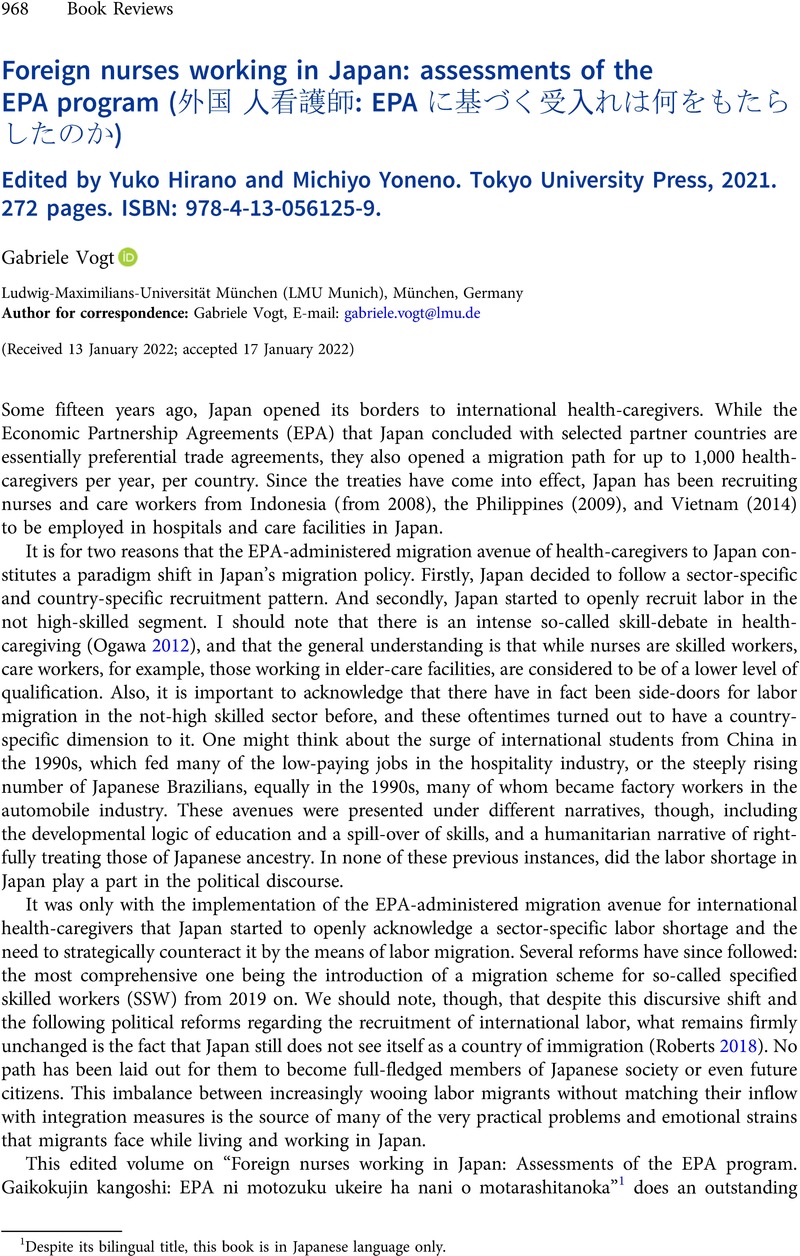Vogt, Gabriele and
König, Anne-Sophie L. (
2021). Robotic devices and ICT in long-term care in Japan: Their potential from a workplace perspective. In:
Contemporary Japan (online since 17 December 2021), DOI:
10.1080/18692729.2021.201584610.1080/18692729.2021.2015846CrossRefGoogle Scholar 